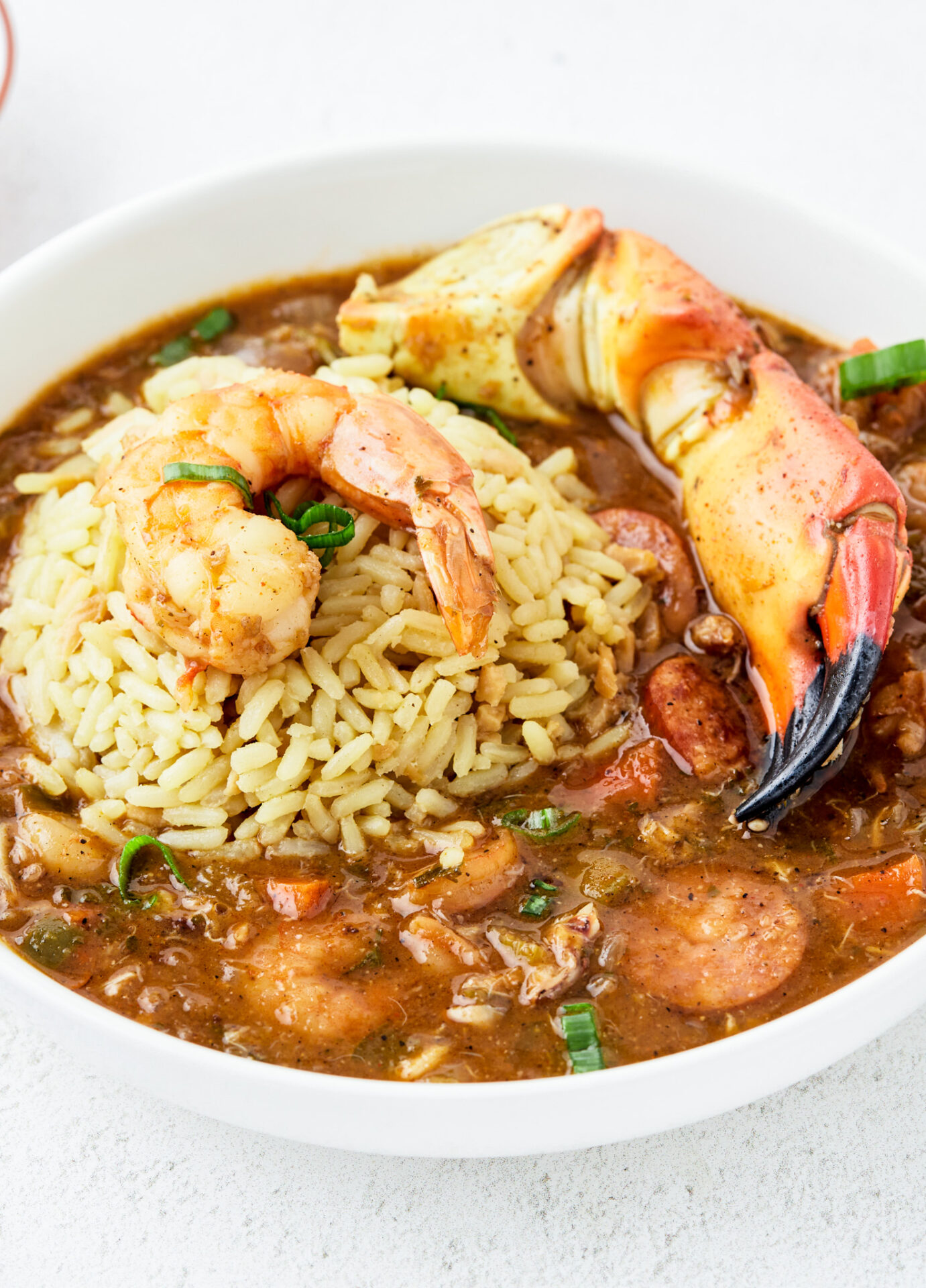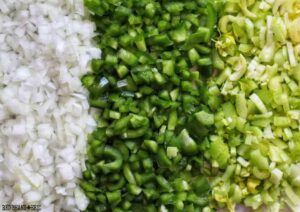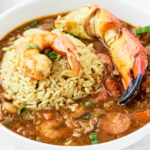New Orleans Cuisine Explained

Mikko Macchione
Tour Guide with Unique NOLA Tours and Author of books about New Orleans.
When Hank Williams sang “Well jambalaya and a crayfish pie and a filé gumbo …”, he was shouting out to some local classic dishes. These delights are from the Cajun influence, but New Orleans cuisine is much broader than that, drawing from African, Native, Island and European roots.
“First you make a roux,” is often the first line of many iconic recipes. A roux – similar to a French mirepoix or a Spanish sofrito – is the primary aromatics that are cooked down in hot oil with flour slowly added to create a base for the dish. In New Orleans the veggies used are called ‘the Holy Trinity.” That is onion, celery and green bell pepper.
For example starting a gumbo requires a roux and then depending on whether the intention is a Creole seafood gumbo, or a more country chicken and sausage the recipe builds from there. For seafood, shrimp stock is added and then sometimes local sausage, and finally oyster or shrimp or both. And the real local touch is to hang a crab claw inside the bowl. For chicken and sausage use chicken stock and then stewed chicken, and please, local andouille sausage. Finally filé, the ground up leaves of sassafras, is sprinkled on at the last minute to thicken it up. By the way, add a real Afro/New Orleans touch put in that okra!
If gumbo is like a stew, jambalaya is like paella. After the roux, in goes tomato sauce, rice, chicken and andouille. Some people like shrimp in their jambalaya as well. And crayfish pie is like any meat pie, except filled with peeled crayfish tails. And again, “First you make a roux.”
Now for more exotic New Orleans offerings, first we’ll look at shrimp or crawfish (or both) éttouffée. The word means “smothered” in French and that’s what’ll happen over rice. Add tomato sauce to a roux, garlic of course, seafood and a touch of water to make it easy to serve over rice.
A classic New Orleans breakfast is grits and grillades. Grillade is strips of top of the round steak slow cooked for a couple hours in a roux with tomato and garlic. When the meat is melting in your mouth, serve over grits. Pro tip: cheesy grits are even better.
Now po-boys are not subs! They are crumbly-crusted French bread overstuffed with roast beef and gravy or fried shrimp or a ton of other fillings. And they’ll ask you ‘Dressed or Undressed?” They aren’t perving out, they’re asking if you want tomatoes, lettuce and pickles.
Finally, we’re going to be a little naughty and talk about a secret recipe. Oysters Rockefeller was invented at Antoine’s and they do not give away their secrets. A close approximation would be a topping of breadcrumbs, shallot, garlic and a shot of Absinthe mixed and onto wilted spinach and baked on top of shucked oysters. If you sneak Parmesan in there, you’re going rogue, but it’s so good!
These classics are just the tip of the menu iceberg for New Orleans food, so we’ll leave it to you to come to visit and explore the culinary joys of this great city.
The delightful star of classics like ‘Roseanne,’ ‘Big Lebowski,’ ‘Monsters, Inc,’ “Barton Fink” and a gajillion other hits, enjoys living in New Orleans. He is not averse to conversing with visitors passing by. He told Kelly Ripa “I enjoy the energy here, being a Zoo animal.”
On a more serious note, the Missouri native says “There a part of my DNA here, I feel at home here in New Orleans.”
Though we won’t divulge his address here, we do show his lovely Italianate mansion on our Garden District stroll, and every now and then he comes out to say “Hello.”
His wife, Annabeth is a clothing designer and runs “Pippen Lane” on Magazine Street featuring awesome duds for little kiddies.









